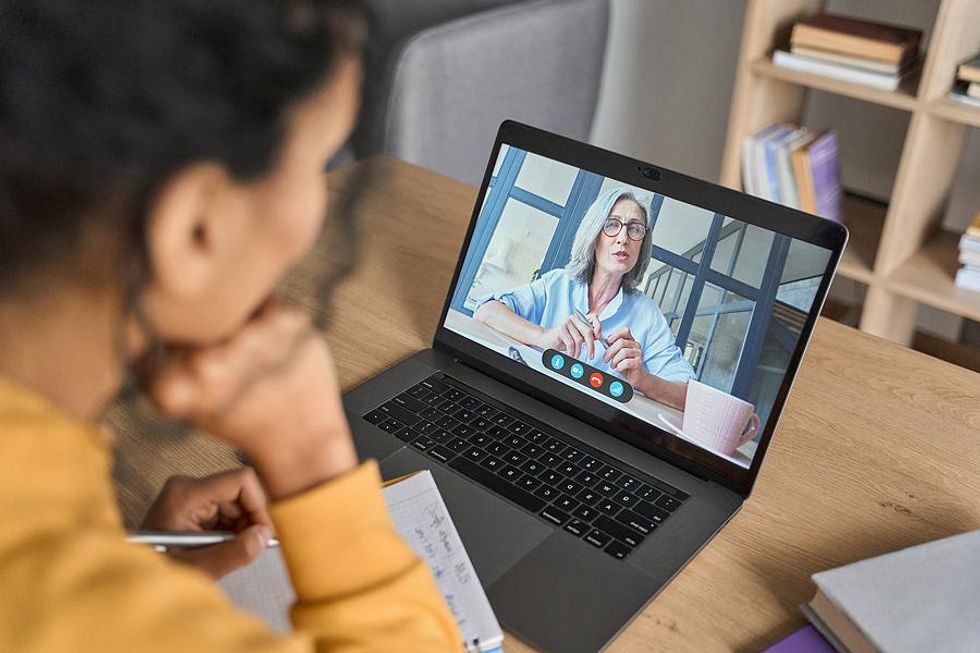
The first time I realized this topic (virtual leadership) was important was about 15 years ago when the organization I worked at implemented a virtual platform for internal collaboration. It has cropped up many times since then but really exploded as an issue during the COVID-19 pandemic. Almost overnight virtual meetings became the way to work and many leaders just didn’t, and still don’t, know how to operate this way.
The big difference is that interaction doesn’t happen organically and has to be planned intentionally.
Since most leaders don’t know how to facilitate a virtual meeting in this way, meetings have become a huge drag on time and energy. People are attending more meetings, but interacting less which causes frustration, burnout, and eventually turnover.
The Leader Who Still Reaches Out And Not Just At The Next Meeting
Leaders know how to communicate (mostly), but the game has changed. You can no longer walk down the hall and drop in on an employee, you can no longer catch up with an employee at the coffee pot, and you can no longer linger after a meeting to check in with an employee. To really be good at communication now, you must be INTENTIONAL. You have to plan those drop-ins, those catch-ups, and those linger times. Employees still want your attention and, just like before, they will notice when they don’t get it.
So, do schedule 1:1s with each of your direct reports, do schedule skip level meetings, and do schedule check-ins with your teams. Get strategic with your calendar—figure out your priorities and the people you need to meet with to support those priorities and then schedule that time.
The Leader Who Knows How To Use The Technology That Everyone Has To Use

Bigstock
No one is comfortable in that meeting where the leader doesn’t know where the share button is or how to let someone else share. It gets frustrating for people when they click the “raised hand” feature and the leader never calls on them. What about the question in the Q&A section that the leader never sees and addresses?
Zoom, Teams, Google Meet, Skype, etc.—all these virtual meeting tools have special features that can bring collaboration and interaction to life in a virtual meeting, but one has to know how to use those features and when and why.
Employees are more comfortable in a meeting that has some structure. A meeting where they know how they are expected to participate and also how they can participate. To provide that experience in a virtual meeting, you need to learn what features are available in your technology platform and learn why you might want to use them.
A great way to learn about technology features is to practice with your team. Schedule a meeting to learn about the technology and how to use its features. It will create unity within your team as you share in a learning experience that will help all of you.
The Leader Who Schedules Another Zoom Call And People Actually Want To Attend

Bigstock
Have you had those meetings where no one offers any comments, where people don’t turn their cameras on, where there is no chatting in the chat section? These all could be signs that people don’t really want to be there.
Employees have different schedules than their manager and I often hear that a manager will put meetings on the calendar without taking into consideration other time constraints of their team. This leads to frustration. Employees have to move around recurring meetings or other project meetings to work around the schedule of the manager, which often leads to them doing work during that meeting that was scheduled.
Then, the frustration is compounded because the meeting turns out to be informational only. This isn’t a productive use of time. Employees want information and need it to do their jobs, but scheduling one more meeting to share information they can read on their own seems wasteful.
A better way forward is to assess what information is really read-only and what information they may have feedback on, or you need their input on. Send the one-way information by email and then schedule an interactive meeting where a two-way conversation can take place in a beneficial manner for both sides. You’ll also want to survey the team and find the best time that works for their schedules before putting that meeting on the calendar.
In addition, learn how to facilitate a virtual meeting. Interaction doesn’t happen in the same way as an in-person meeting, and you need and want that input from your team. One way to do this is to add an ice breaker such as a show-n-tell. Have each person share one item in their home office that helps them stay on track. You’ll get them to turn on their cameras, share personal information which builds trust, and start the two-way conversations. Another great addition to a virtual meeting is assigning roles, like a moderator to monitor the chat and Q&A sections, so you don’t miss them; a timekeeper to make sure you don’t run over; and an online scribe to notate decisions and action items the group agrees to. The online notes can be referred to during the meeting and be used as a great closer where everyone can review, update, and agree—in real time—on what’s going to happen after the meeting.
Many of us have become de facto virtual leaders due to the new remote workplace, but that doesn’t mean we’re good at it. It’s time to check your skillset and make sure you’re the virtual leader every employee wants.
- 10 Ways To Become A Better Leader At Work - Work It Daily ›
- The #1 Difference Between A Manager And A Leader - Work It Daily ›
- 3 Ways To Land Your Remote Dream Job - Work It Daily ›
- How To Be A Successful Remote Leader - Work It Daily ›
- 4 Fun Activities For The Remote Workforce - Work It Daily ›
- How To Conduct A Productive Meeting - Work It Daily ›

 Bigstock
Bigstock Bigstock
Bigstock Bigstock
Bigstock


